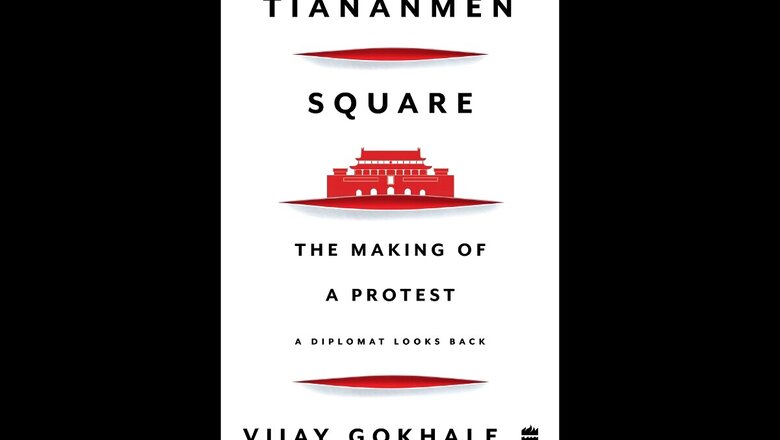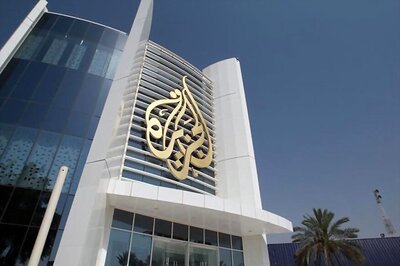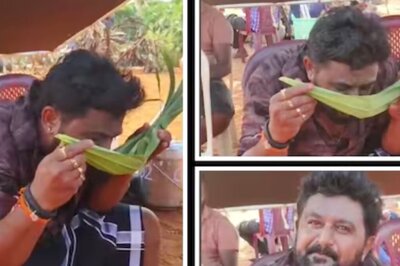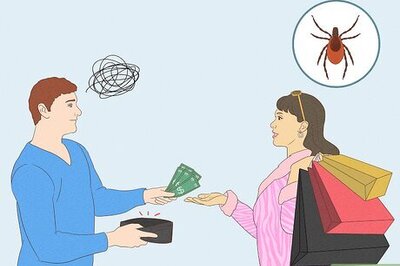
views
Saturday, 15 April 1989. The day began quietly. Winter was just giving way to spring. There were no signs of the impending storm that broke on the seven o’clock evening news bulletin. The death of Hu Yaobang was the leading story. He had suffered a heart attack during a politburo meeting, and had passed away at 7.53 a.m. that morning in hospital. According to his secretary, Deng appeared to be shocked. ‘He immediately ground out his cigarette and crossed his hands weakly across his chest.’ The Party’s official communique recalled his contribution to the ‘liberation struggle’, and in opposing the Gang of Four, as well as his work as the head of the Organization Department, rehabilitating thousands of cadres who had been victimized during the Cultural Revolution. There was no reference to his fall from power.
An embassy colleague who happened to be present in Beijing University that afternoon on some other business was the first to inform us about the appearance of big-character posters in praise of the deceased Hu. That evening students began to gather in small groups across campuses in China to discuss the news. The overwhelming sentiment was one of sympathy for one who they felt had been treated unfairly. The next morning, more small-character posters (xiaozibao) began to appear in campuses. Again, these were spontaneous, respectful and in the nature of tributes. Wreaths were prepared for laying at the base of the Monument of the People’s Heroes, a stone column in front of the mausoleum of Mao Zedong in Tiananmen Square. Small groups of students were also seen visiting the square in spontaneous gestures of mourning. This conformed to the pattern of developments after the death of another beloved leader thirteen years ago – Premier Zhou Enlai. Those in the Indian embassy who were following this matter recognized that this was out of the ordinary, and we began to monitor the developments. If there were advocates inside the Party and government who were alarmed at this spontaneous show of grief, they were still in the minority. The leadership, as is customary, visited Hu’s residence and condoled with the family. Deng was represented by his spouse, Zhuo Lin, and his son, Deng Pufang. Life continued as normal.
By 18 April, the number of students visiting the square swelled to tens of thousands. Aside from Beijing University, two other universities took a lead – the People’s University (Renmin Daxue) and the Central Nationalities Institute. The base of the Monument to the People’s Heroes was gradually almost entirely covered with paper wreaths, flowers and elegies to Hu, handwritten on paper and pasted to the column. A growing number of ordinary people were reading them. Criticism about the Party began to surface. There were reports of random acts of throwing of bottles or shoes at the public security forces. The Western media understood that there was a potentially important story to cover, and began to descend on Tiananmen Square. Despite predictions by Western media, such as ABC News’ Todd Carrel that ‘if history is a guide, they will crack down soon’, the authorities continued to exercise restraint.
In the week ahead the numbers continued to swell despite public warnings by Beijing city authorities. We noticed the appearance of a three-metre-tall portrait of Hu Yaobang in the square. The first sit-ins on the steps of the Great Hall of the People were seen. The broad sentiment remained sombre, one of mourning for Hu Yaobang, but the first calls for dialogue between students and the authorities to address their demands began to be heard. There were indications that the unfinished agenda of the 1986 student protests may be rearing its head.
The students’ demands focussed on four main areas – greater education and job opportunities; the elimination of benefits to the children of cadres; greater responsiveness to the citizens’ needs by the government; and some personal freedoms. Hu became a useful rallying point because he had been more sympathetic than others in 1986. Foreign diplomats who had visited Beijing University claimed to have seen some posters critical of Premier Li Peng, and even one about Deng’s ‘neo-authoritarian’ tendencies. We were told that some of the posters also contained references to Abraham Lincoln, the US Declaration of Independence and even to Patrick Henry’s famous ‘give me liberty or give me death’. Yet the students’ concerns were overwhelmingly limited to their grievances. But the Western media started to create the impression that the students were seeking Western-style democracy. The Western media’s initial efforts to define what was happening in the campuses in terms of their own reference points was the beginning of a fundamental misjudgement by Western governments about the nature of the student movement as well as the subsequent actions taken by the Chinese government. Many of them got it wrong from the outset.
On the night of 20 April, a group of students decided to stage a sit-in at the Xinhuamen, which is the ceremonial gate leading to the residences and offices of China’s top leadership. The Xinhuamen is set into the ochre-coloured walls that surround the entire Forbidden City. In early April, the magnolia and forsythia that bloom along its southern facade make it particularly attractive in the drabness of the fading winter. After the 1949 Revolution, Mao had decided to appropriate this part of the Forbidden City. It was ironical that the communists, who had fought against imperialism and feudalism, had then decided to reside inside the very symbols of the state they had overthrown. But Mao was nothing if not a bundle of contradictions. He regarded himself as the true inheritor of Chinese imperial power, and had acted like an emperor. In the years after Mao’s death, several leaders had moved their residences elsewhere, including Deng Xiaoping, but Zhongnanhai still remained the nerve centre of communist power. Therefore, a gathering of students in front of the gate made for a qualitatively new situation.
Read all the Latest News, Breaking News and Coronavirus News here. Follow us on Facebook, Twitter and Telegram.




















Comments
0 comment